Mould is a common household problem impacting up to 50% of Australian homes according to the World Health Organisation (WHO, 2022) and can pose significant risks to your health and the integrity of your home.
It is important to know that not all moulds are harmful, but there are certain types that can cause serious health issues, especially for those with pre-existing conditions like asthma or weakened immune systems.
Understanding the dangers of mould exposure and recognising the different types of mould through colour and texture can help you take the necessary steps to protect your family’s health and the durability of your home.
There are multiple ways to identify moulds, the easiest and most common is through its colour and texture. There are thousands of different species of moulds with varying identifiers so it can be challenging to know what you are looking at. The most common household moulds can be associated with the following colours. If you are not sure if your mould is low or high risk, it is best to call a specialist.
Black Mould
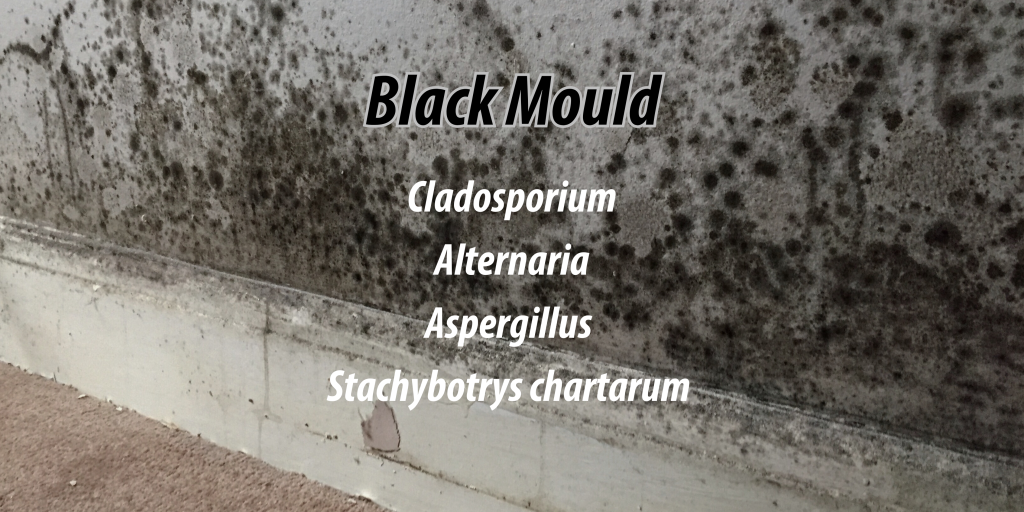
Brown Mould
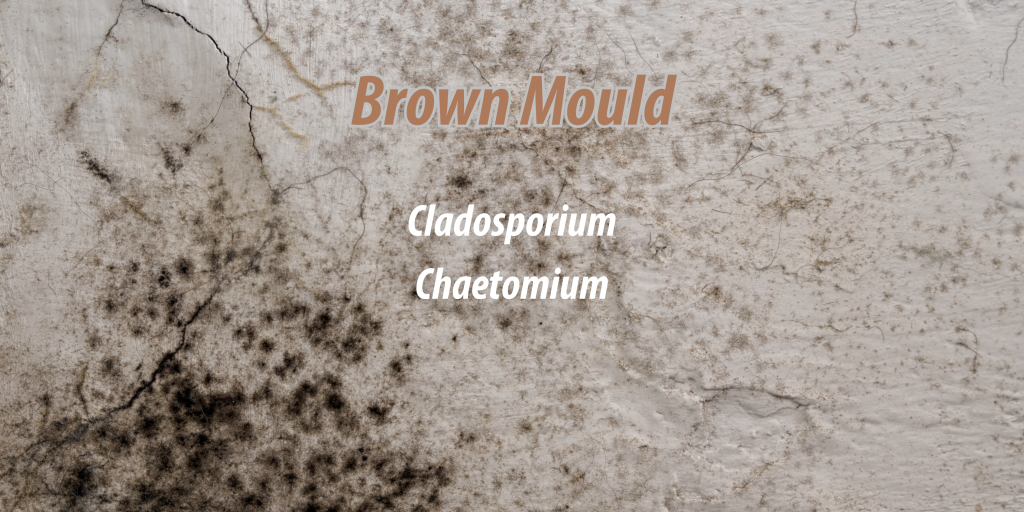
Green Mould
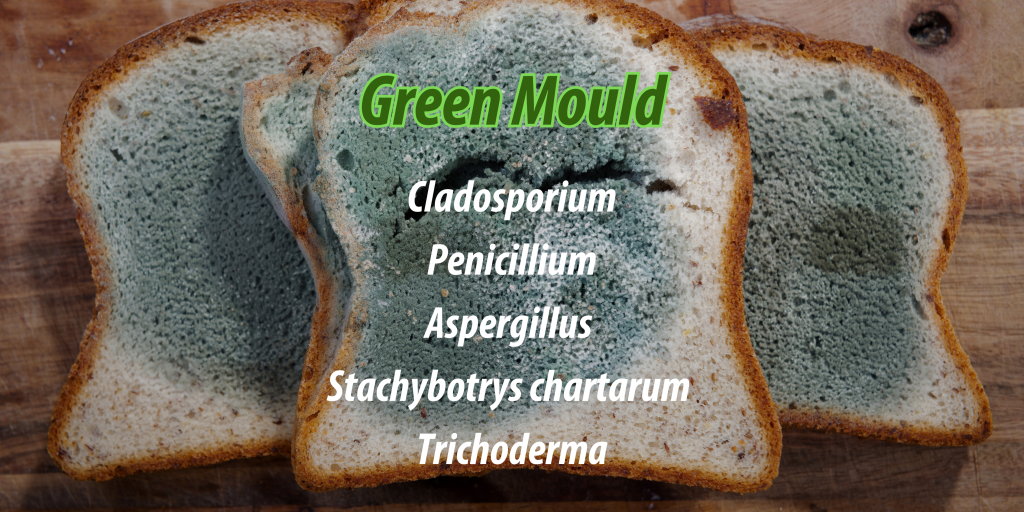
White Mould
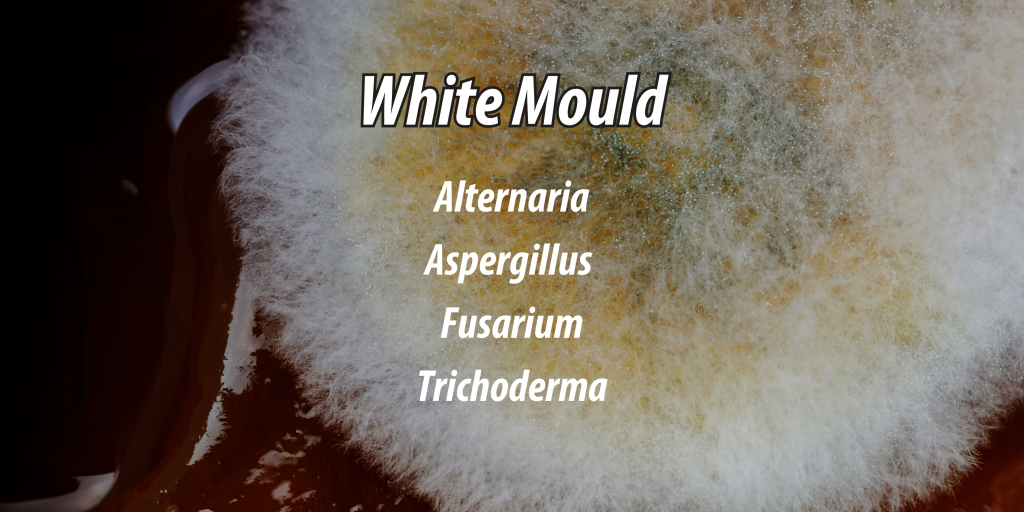
Pink Mould
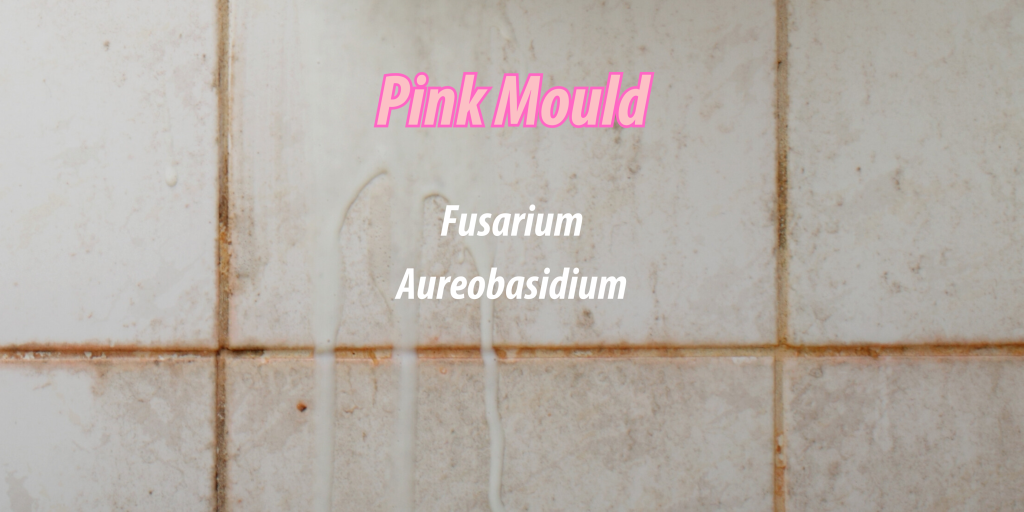
Low Risk: Allergenic Moulds
Allergenic moulds are the most common type of mould found in homes and are generally considered low risk.
As hinted to in the name, these moulds can cause allergic reactions, particularly in those with asthma, hay fever, or other respiratory conditions. In Australia this accounts for 8.5 million people or 34% of our population according to the Australian Bureau of Statistics (2022).
Exposure to allergenic moulds can lead to symptoms such as sneezing, coughing, a runny nose, and itchy eyes.
These reactions can be unbearable to those impacted every day, and so although these moulds are labelled low risk, they can cause illness to those with respiratory issues and weakened immune systems and should be dealt with immediately.
These Allergenic Moulds include Cladosporium, Alternaria, Aspergillus, and Penicillium.
Cladosporium
Where does it thrive: Often found in homes, Cladosporium can grow on wood, carpets, and fabrics. It thrives in both warm and cool areas and is a common trigger for asthma and allergies.
Identifiers: Mould colour can be brown, green or black (this is a non-toxic black mould). Appearance can be powdery or suede-like.
Alternaria
Where does it thrive: This mould typically grows in damp areas such as showers, bathtubs, and under sinks. Alternaria spores are easily airborne, making them a common cause of allergic reactions.
Identifiers: This mould can have a fuzzy texture and coloured white with black spots.
Penicillium
Where does it thrive: While some species of Penicillium are used in antibiotics, others can cause allergic reactions. This mould often grows on materials that have been damaged by water, such as wallpaper, insulation, and carpets.
Identifiers: This mould can be blue, green or yellow with a fuzzy texture.
Low Risk – Pathogenic Moulds
Pathogenic moulds are less common but can pose risks to those with weakened immune systems or pre-existing health conditions.
While generally considered low risk for healthy individuals, these moulds can cause infections, diseases and other health issues in vulnerable populations which include infants, the elderly and immune compromised people.
Pathogenic moulds that are most common include Aspergillus, Fusarium, and Aureobasidium
Aspergillus
Where does it thrive: This mould is commonly found in indoor environments and can cause respiratory infections, particularly in individuals with weakened immune systems. Aspergillus can also produce mycotoxins, which can be harmful if inhaled in large quantities.
Identifiers: Some of the colours that Aspergillus can present in are green, white or grey with dark spots. The texture of this mould can look powdery.
Fusarium
Where does it thrive: Fusarium can rapidly grow on a variety of surfaces, including carpets, wallpaper, and other water-damaged materials. It can cause skin infections, particularly in people with compromised immune systems, and is known for producing mycotoxins.
Identifiers: Can appear in many colours including shades of red, white or pink.
Aureobasidium
Where does it thrive: Often found on wooden surfaces, wallpaper, and painted walls, Aureobasidium can cause skin rashes, particularly in people with sensitive skin or allergies. While less harmful than other pathogenic moulds, it can still pose a risk to vulnerable individuals.
Identifiers: This mould is pink in colour with black spots throughout.
High Risk – Toxic Moulds
Toxic moulds are the most dangerous type of moulds found in homes. These moulds produce mycotoxins, which can be harmful or even fatal if ingested, inhaled, or come into contact with the skin.
Prolonged exposure to toxic moulds can lead to severe health issues even for those with general good health, including respiratory problems, neurological damage, and in extreme cases, death.
Although these toxic moulds are not good for your health there is no reason to panic. Only in rare and extreme cases can these moulds cause terrible damage to your body. It is important however to take action as soon as you notice toxic mould or mould of any type.
Stachybotrys chartarum (Black Mould)
Where does it thrive: Commonly known as black mould, Stachybotrys thrives in damp, humid environments and can produce dangerous mycotoxins. Exposure to Stachybotrys can lead to severe respiratory issues, chronic fatigue, and neurological problems.
Identifiers: Dark green or black in colour and can appear slimy or furry in texture.
Chaetomium
Where does it thrive: Often found in water-damaged buildings, Chaetomium can cause severe health issues, including skin infections, respiratory problems, and neurological damage. It is also associated with the production of mycotoxins.
Identifiers: Initially appears white in colour but will change colour as it matures to a grey, brown or black shade.
Trichoderma
Where does it thrive: Trichoderma is a fast-growing mould that can cause significant damage to building materials, particularly wood. It is known to produce mycotoxins that can lead to severe health issues, including respiratory problems and immune system suppression.
Identifiers: White and creamy in colour, but when spores are released turns a green colour.
Preventing and Addressing Mould Growth
The best way to protect your home and health from the dangers of mould is through prevention and prompt remediation. Here are some steps you can take to prevent mould growth:
- Control Humidity: Keep indoor humidity levels below 60% to prevent mould growth. Use dehumidifiers in damp areas and ensure proper ventilation in bathrooms, kitchens, and basements.
- Fix Leaks Promptly: Address any leaks in your home immediately, whether they are from plumbing, roofs, or windows. Water damage can quickly lead to mould growth if not repaired.
- Clean and Dry: Regularly clean areas prone to moisture, such as bathrooms, kitchens, and basements. Ensure that wet areas are dried thoroughly to prevent mould from taking hold.
If you suspect that you have mould in your home, it’s essential to address the issue promptly. For small areas of mould, you may be able to clean it yourself using appropriate protective gear and cleaning solutions. However, for larger infestations or toxic moulds, it’s advisable to seek professional help to ensure safe and effective removal.
Mould can pose significant risks to your health and home, particularly if left unchecked. By understanding the different types of mould and their associated risks, you can take proactive steps to prevent mould growth and protect your family’s health. If you suspect a mould problem, don’t wait—take action today to keep your home safe and healthy.





